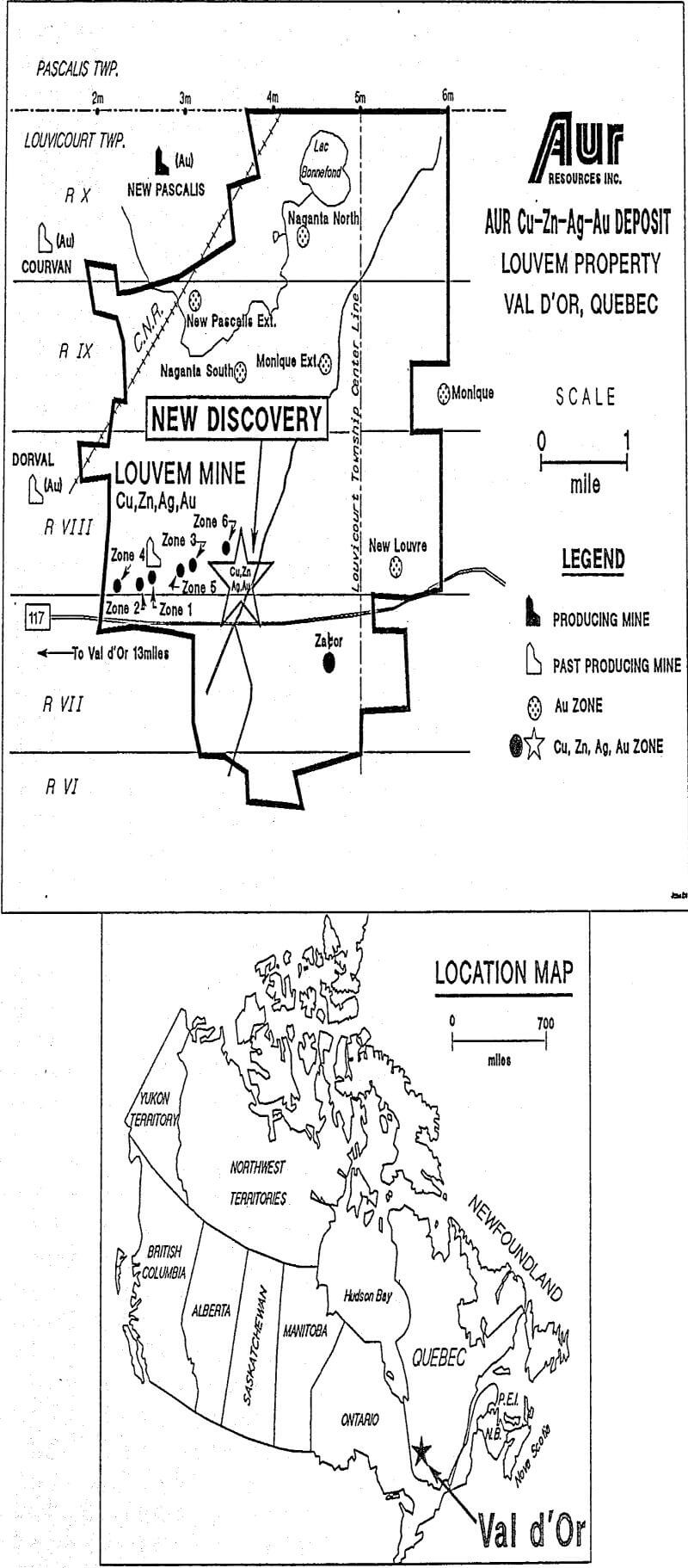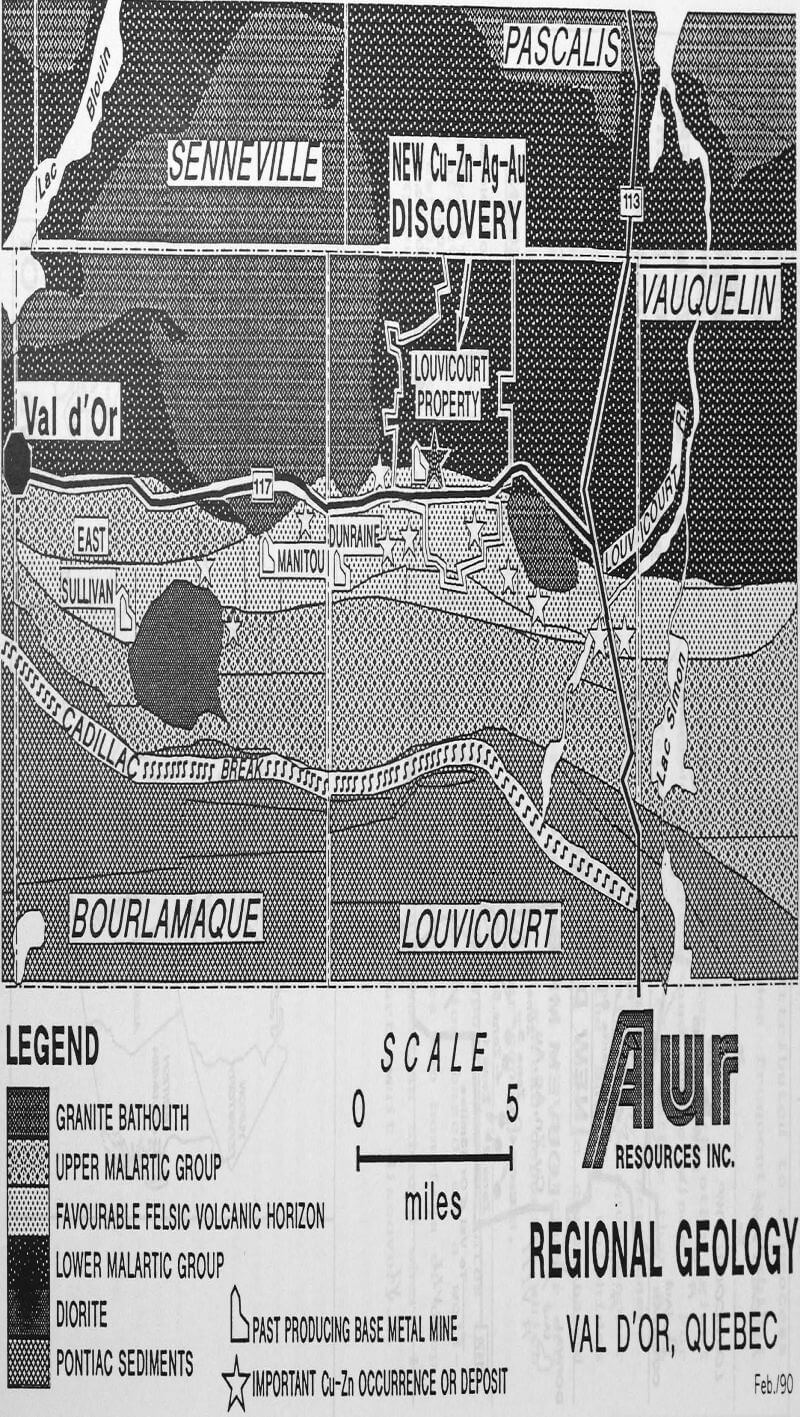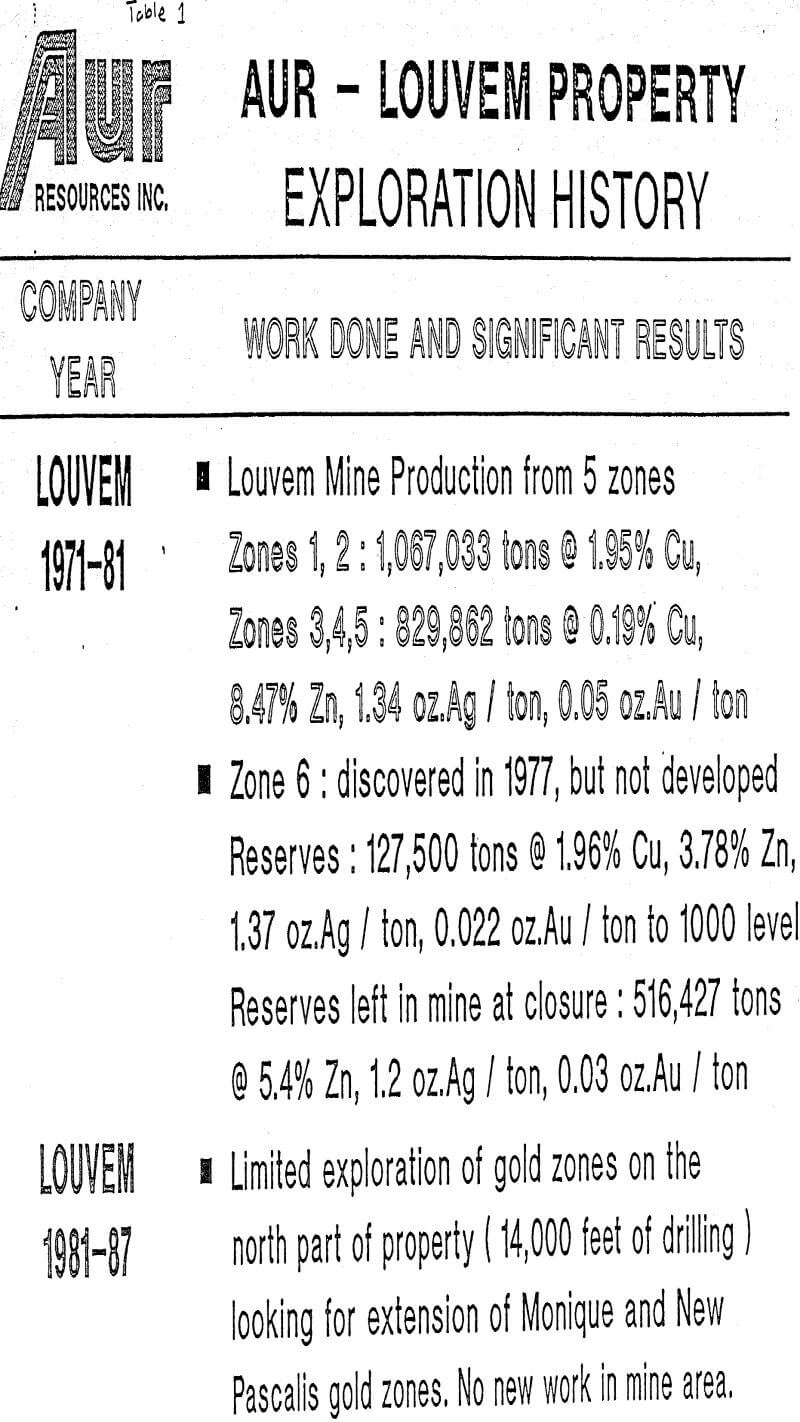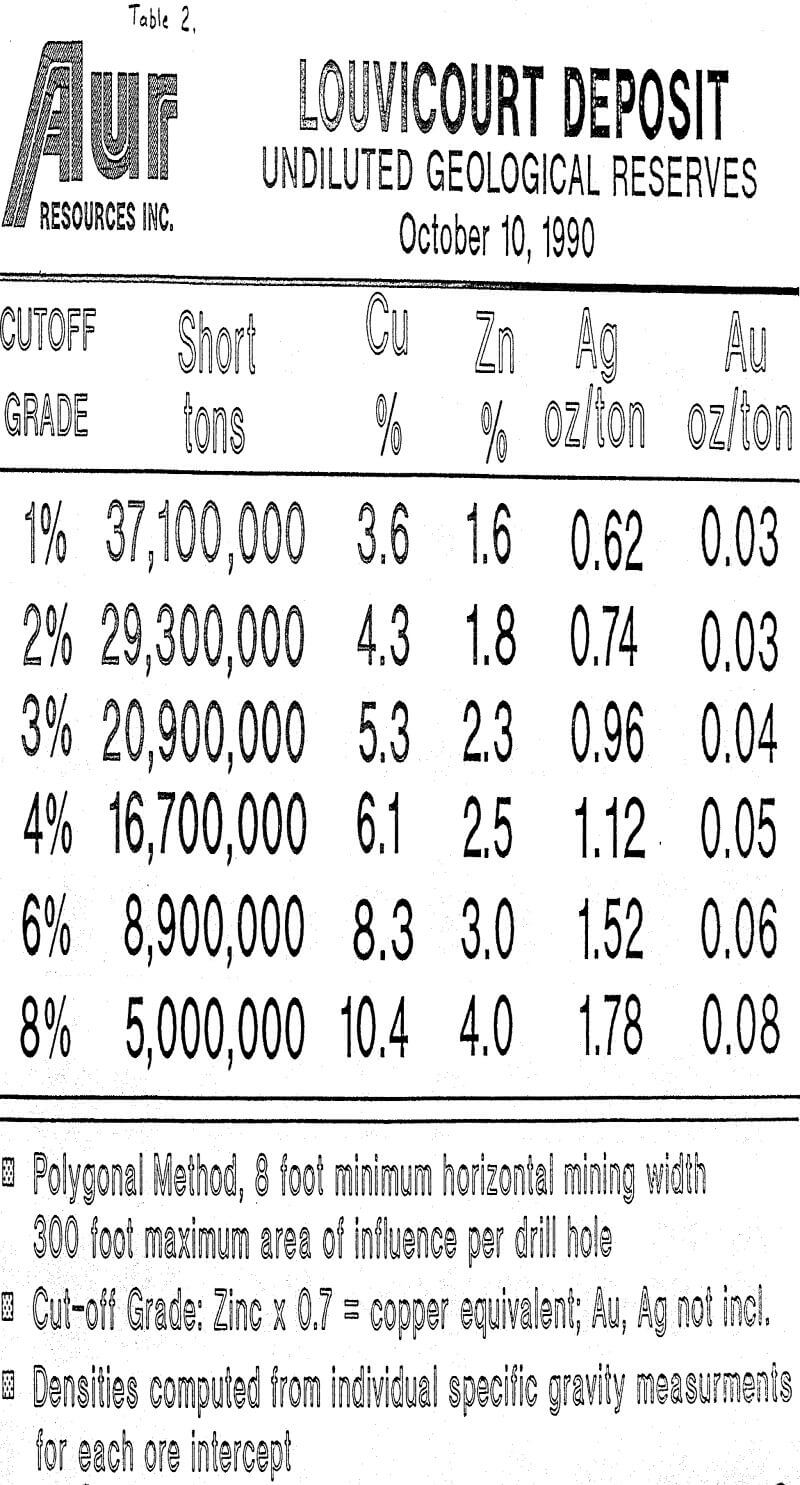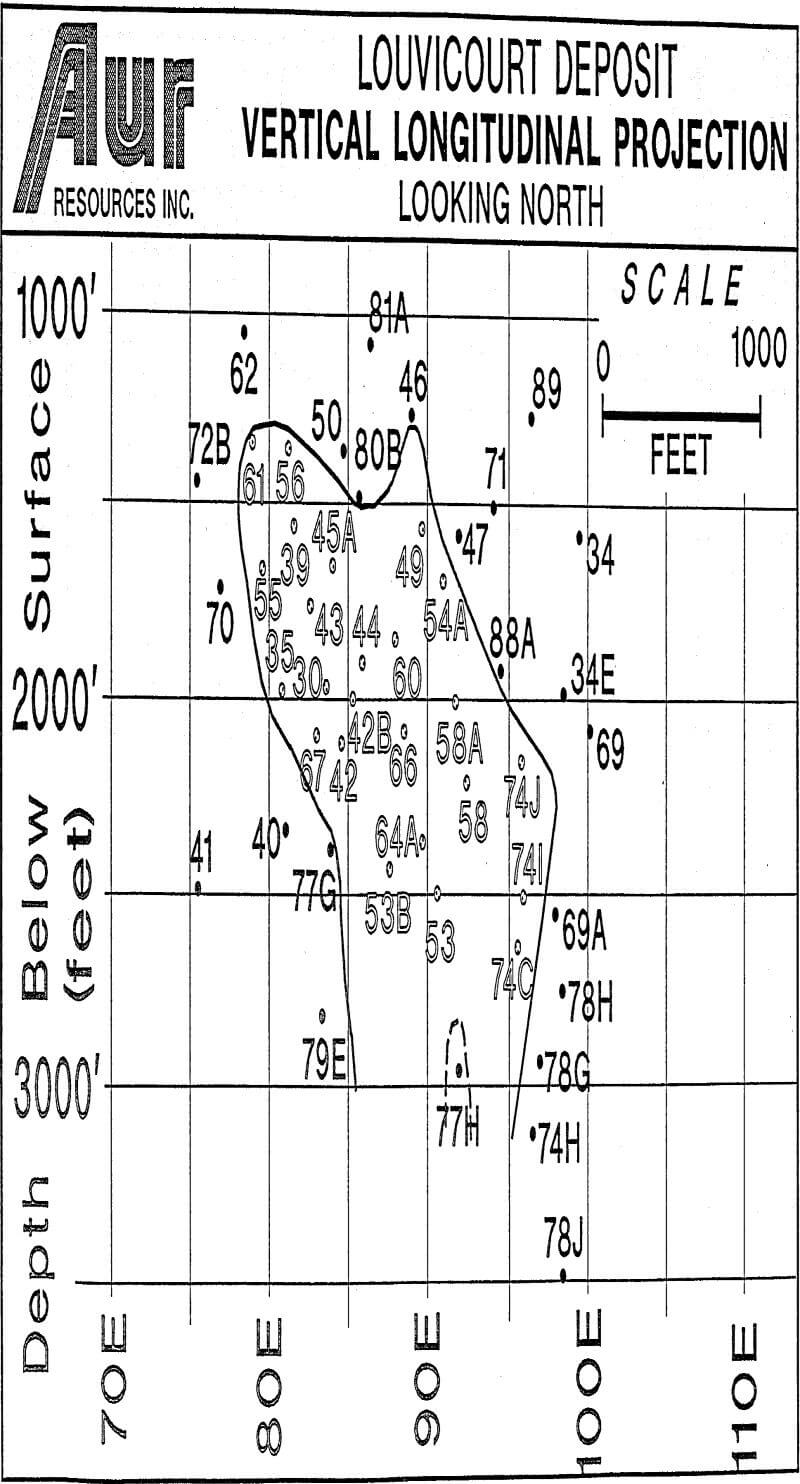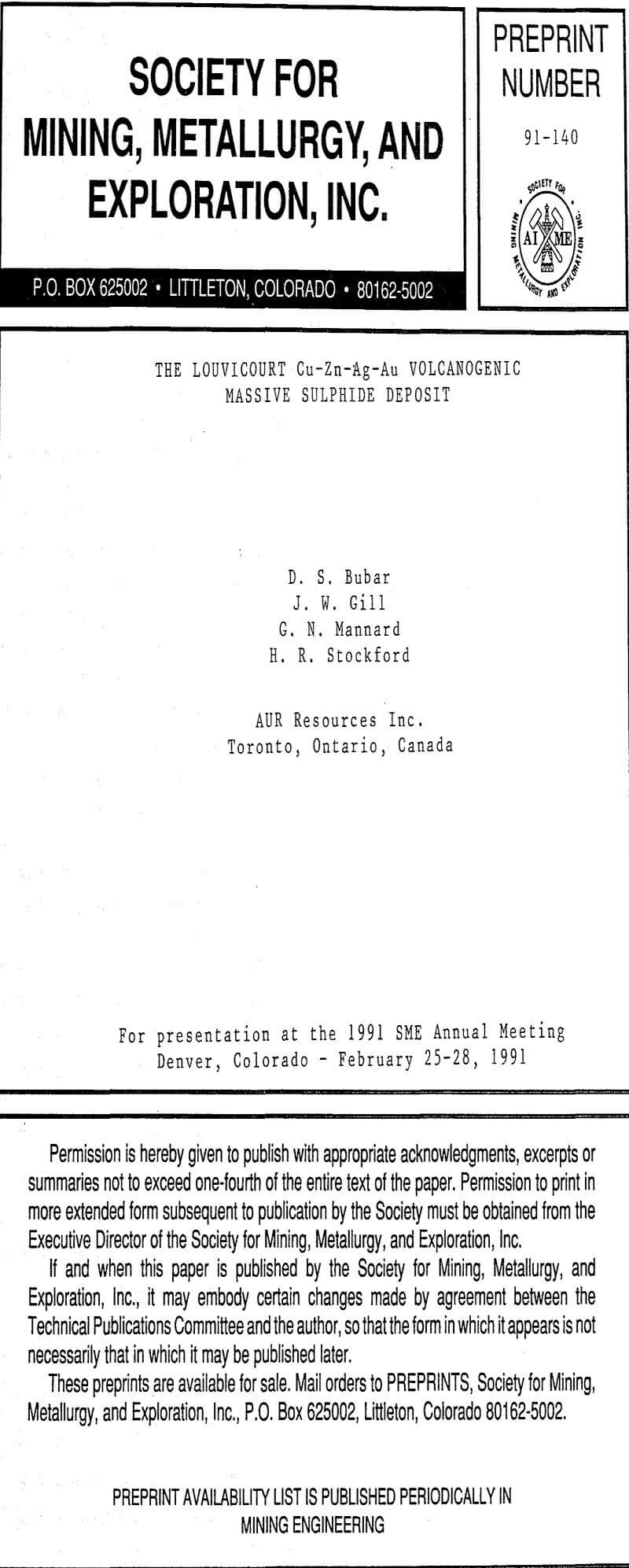The Louvicourt deposit is proving to be a very large one. Reserves now stand at approximately 30 million tons and, more importantly, the deposit contains some impressive widths of exceptionally high grade Cu-Zn-Ag-Au mineralization that should ensure its profitability in virtually any future metal price scenario.
Regional Setting
The Louvicourt deposit is located approximately 15 miles east of Val d’Or, and just one-half mile north of provincial highway 117 that links Val d’Or with Montreal. The deposit lies within a one-mile wide unit of felsic volcanic rocks that strikes east-west over a distance of at least 25 miles. This unit hosts numerous important copper-zinc massive sulphide occurrences, including four past-producing mines; the East Sullivan, Golden Manitou, Dunraine and Louvem mines. These four mines collectively produced over 30 million tons of Cu-Zn massive sulphide ore at the average grades listed in Table 1. However, despite these significant production figures, Val d’Or has generally not been recognized as an important base metal camp, and the announcement of the new discovery at Louvicourt came as a surprise to many industry observers who regarded Val d’Or strictly as a gold producing camp. (Of course, this was not without good reason as Val d’Or has produced over 20,000,000 ounces over the past 50 years, but the base metal production was also significant.)
Geology
Our understanding of the geology of the Louvicourt deposit continues to improve with further drilling, but it is still based on fairly wide-spaced holes spaced an average of more than 200 feet apart.
The principal lithologic units that comprise the Host stratigraphy are now fairly well established. These are, from north to south, in stratigraphic ascension:
- Hangingwall andesite (dark green);
- Felsic Volcanics (Yellow);
- Volcano-sedimentary sequence (pink and red);
- Upper intermediate sequence (pale green).
Economic-grade copper-zinc mineralization occurs as a series of closely-spaced, stacked semi-massive to massive sulphide lenses which grade laterally into zones of stringer chalcopyrite and/or disseminated pyrite mineralization. We have now defined eight distinct sulphide lenses or clusters of lenses within the volcano-sedimentary sequence.
Likewise, the associated hydrothermal alteration of the wallrocks of the Louvicourt deposit also seems to form a broadly conformable envelope around the massive sulphide lenses. Close to the massive sulphides intense black chlorite/iron carbonate alteration is developed which grades outwardly into a halo of dominantly sericitic alteration that may locally contain chloritoid porphyroblasts. Stratigraphically above the massive sulphides a distinctive iron-rich alteration assemblage is developed consisting of green chlorite with magnetite and garnet.
From the longitudinal projection of the Louvicourt deposit for the holes completed to October 10, a relatively steep easterly plunge trend can be inferred. The eastern limits of the mineralization are well defined as in this area the host sequence abuts against, and is truncated by, a prominent dome structure in the felsic volcanic sequence. The mineralization pinches gradually to the west and up-dip but remains open to depth potential to west. At the present time drilling is in progress to test for an extension of the deposit at the 3500 foot level and in-fill holes are being drilled where there are large gaps in the information base.
The Louvicourt deposit is a typical because of its very large size and unusually high grades, which can perhaps be attributed to a process of secondary enrichment, as the massive sulphides frequently exhibit distinctive replacement textures.
